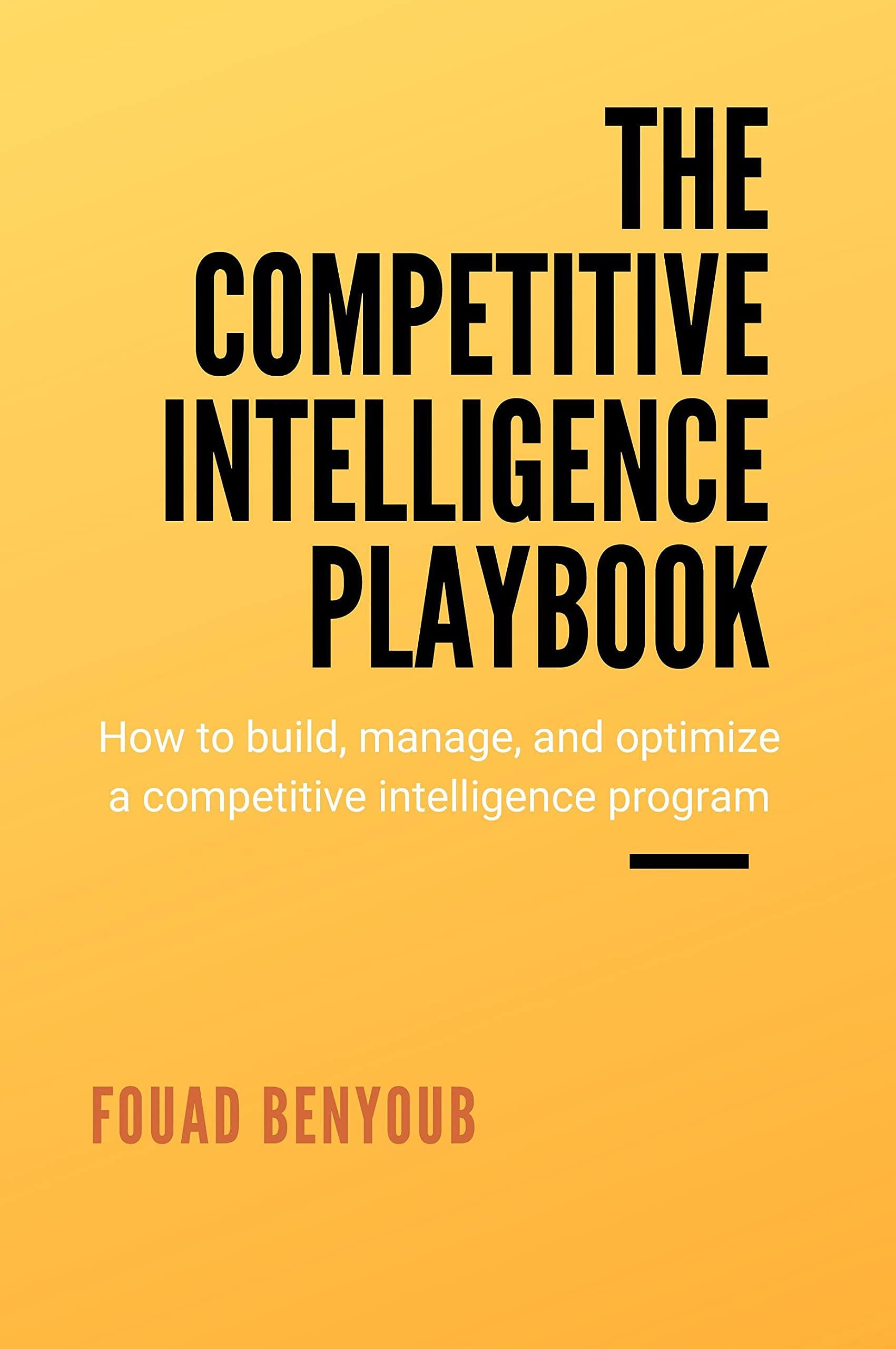CI professionals today are facing a lot of challenges. There are the obvious ones – like budgetary constraints, building and maintaining an effective team, and clarifying the CI function's role and scope – and then there are a whole load of not-so-obvious ones. I like to bucket these into five main areas:
- Demonstrating the value of CI,
- Organizational misalignment,
- False debate,
- Internal politics,
- Internal competition.
In this article, we’ll take a closer look at each of these not-so-obvious challenges and how to solve them. Then, we’ll explore one of the biggest changes shaking up our industry today – the rise of AI.
Let’s get into it.
Challenge #1: Demonstrating the value of CI
In my 20 years of experience and discussions with CI pros and stakeholders, a key challenge I’ve noticed is the perception of CI’s value. This is a vital challenge to overcome because it directly impacts the budget and resources allocated to our function, as well as where it sits within the organization.
Challenge #2: Organizational misalignment
Another challenge I see a lot is misalignment between what CI produces and the organization's goals. The CI function may be churning out work, but if that output is disconnected from the organization’s strategic initiatives and struggles, what’s the point?
Don’t get stuck in the tactical, deal-level stuff. You need to make sure that everything you do in CI ladders up to those big overarching company goals. Avoid distractions and deliver value. This is also going to help you resolve challenge number one – showing the value of your function so you can secure more resources.
Challenge #3: False debate
We’re drowning in false dichotomies when it comes to CI. Art vs. science, old school vs. new school approaches, short-term vs. long-term monitoring, full-time vs. part-time CI staff – who cares? These debates are holding everybody back, and we need to move past them.
My advice is to avoid distractions and unproductive debates. Instead, find what works for you and your situation.
Learn from all sources – leverage established frameworks and research, but also learn from on-the-ground practitioners sharing hard-won tips and techniques. Use what applies to your role, and discard what doesn't. Just make sure you consider all options. Sometimes, the keys to success are hiding in the unlikeliest of places.
Challenge #4: Internal politics
Next, there are unspoken challenges around internal politics and influence. In the face of these kinds of obstacles, even the most talented and well-equipped CI teams can struggle to build bridges with other teams and get the exposure they need to not only showcase the value of what they do, but make a real impact.
To overcome this challenge, try formal stakeholder management strategies like Mendelow’s matrix. This can help you plan how to properly inform, consult, and involve different stakeholders based on their interest and influence levels.
Challenge #5: Internal competition
In any company, other groups will probably have niche competitive knowledge on a specific segment. While it’s great to have a knowledgeable team, the issue is that when you’re presenting your findings, these people may jump in and challenge you.
Whenever I find myself in this kind of situation, I embrace it as an opportunity. I'm happy to learn from subject-matter experts who know more about a particular competitor. My role is to federate intelligence across the organization, so I try to connect with these people, learn from them, involve them in the CI process, and make them a part of the broader intelligence network.
The key is to put your ego to the side and get into the student mindset. Don’t get defensive when someone comes to you claiming to know better – start taking notes. You’re not here to know everything – you’re here to learn and share that knowledge. Give internal subject-matter experts a platform, give them credit, and thank them for sharing their expertise.
Harnessing AI in competitive intelligence
What would an article on the challenges facing CI pros in 2024 be without a section addressing the impact of AI?
AI is undoubtedly the hottest topic of our time, and it's not just a passing fad. AI represents a massive shift, impacting everything – competitive intelligence included. And this is just the beginning – right now, we're barely scratching the surface of what AI can do.
Last year, I had the pleasure of hosting a virtual session for Competitive Intelligence Alliance. In it, we explored how CI professionals should get to grips with AI. The advice then was to learn, experiment, and test. That advice still stands.
In the future, many of the activities we currently perform manually will be automated, and rightfully so. It's not that we in CI aren't providing value, but sometimes we fall victim to the path of least resistance – doing rote, mentally undemanding work out of habit or fatigue. If a task is that straightforward for a human, it will be easily automated by AI-powered tools.
The obvious areas ripe for automation include text and content generation. If you want to create competitor assessments or market landscape summaries, there are already plenty of platforms that can generate that content.
When it comes to the deep reasoning required for sophisticated key intelligence topics, things get a little more complex. Current generative AI models struggle with that level of analysis, but who knows what GPT-5 or future models will be capable of?
Even before the rise of advanced language models like ChatGPT, the CI field was already talking about “toil” - tedious manual tasks ripe for automation.
In my 2021 book, The Competitive Intelligence Playbook, I had a chapter on the automation we could expect to see in coming years. In it, I discussed how steps of the intelligence cycle, like intelligence gathering, analysis, and sharing insights and recommendations would be augmented by automation.

Parts of the process are clear targets for automation. Gathering intelligence from reliable online sources, and setting up streams of data from RSS feeds and APIs – that's table stakes.
This is a development worth paying attention to. If your job today is just monitoring feeds and sources, be careful, because that task can and will be optimized via automation – it’s much more cost-effective.
The true value of CI is tackling the organization's most complex, strategic issues - being laser-focused on the key intelligence topics tied to the company's strategic objectives. I believe AI is still a ways away from being able to fully understand that level of operational context and nuance.
AI’s impact on CI will be significant, no doubt. My advice isn't to fear it, but to adapt and embrace it. Get ready by upskilling. Prompt engineering – learning how to effectively query AI assistants to extract exactly what you need – is job skill number one right now, not Boolean search operators.
As CI professionals, we need to keep Nassim Taleb’s idea of the black swan in mind. Don't be like the turkey, blindly delighted by the benefits of automation, without considering if your neck might soon be on the butcher’s chopping block. Instead, make sure you have the skills you need to remain indispensable as more and more CI tasks are automated.
Focus on high-value, strategic deliverables, not low-hanging fruit tasks that are easy to automate. That's the key to thriving in CI's AI-augmented future.
The AI in CI Playbook
Bursting with no-nonsense info to bring you up to speed with AI for CI in no-time, the AI in CI Playbook sidesteps hype and speculation to bring you the most practical guide on using AI for your competitive intelligence work possible.
Stop feeling frustrated with AI. Start prompting like a pro and discover how to use context the right way so you can finally receive outputs that save you time and maximize your impact. 🦾
Click the banner below to grab your complementary copy. 👇

The future of AI
In The Black Swan, Taleb talks about the importance of listening to the “silent evidence” – but it's not so silent anymore. There are so many people actively exploring groundbreaking AI capabilities.
In a recent conversation with Sam Altman, CEO of OpenAI, Lex Fridman asked whether Altman would focus compute power on automating menial, easy tasks to free humans for more complex work. Surprisingly, Altman said, with computing power becoming so expensive and invaluable, why would you waste it on totally menial tasks versus applying it to harder, more complex challenges?
It was eye-opening. We have to remain humble learners here because things are moving so fast, I don't think anyone truly knows where this AI evolution will ultimately land.
Why am I saying this? Because understanding the full context and dynamics of how an organization operates is tough to digitize. The human cues, power dynamics, decision-making processes, and politics – mapping all that into a digital twin that can comprehend it all is incredibly difficult. I'm sure some future AGI system will be able to pull it off, but we're not there yet.
My take may seem contrarian, but I'm comfortable with that. If you get complacent about reskilling or assume you'll smoothly transition into our AI-powered future, you could be as oblivious as the turkey who didn't foresee its destiny with the butcher. This is a nuanced, rapidly evolving situation – keeping your eyes open and staying humble is key.
Closing thoughts
As we’ve seen, competitive intelligence pros face some major challenges in 2024 and beyond.
To overcome these challenges, it's important to clearly demonstrate the value of competitive intelligence in line with your organization's goals. Also, try not to get caught up in unproductive debates and internal politics. And don't forget to collaborate with subject-matter experts in different departments.
But perhaps the biggest disruptive force is AI. As it automates many routine CI tasks, you'll need to upskill to focus on sophisticated, context-rich strategic analysis that delivers unique insights that the bots can't (yet!) produce. Embracing skills like prompt engineering while developing indispensable stakeholder management abilities will separate the future-proof CI rockstars from those who are made obsolete.
Despite the obstacles, this is an exciting time for CI. By focusing on the work that matters most, helping stakeholders to grasp CI's full potential, and continuously reskilling to stay ahead of the AI curve, you can cement CI's role as an essential strategic function.






.png?v=09cf73b4b5)